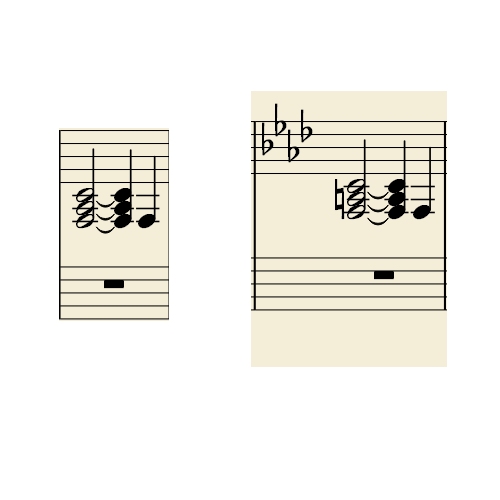
- Musescore change key signature how to#
- Musescore change key signature Patch#
- Musescore change key signature full#
Indeed, while the Arduino side of the project you can find described below was done in a couple of hours, the MuseScore modifications for the very first working prototype required the rest of a full couple of days.
Musescore change key signature Patch#
Last summer, I happened to have at reach an Arduino Uno board, as well as a Neopixel RGB LED stripe, and I decided to give a second shot to that old dream, perfectly aware that the toughest part would have been this time to modify an open-source music editor and player such as MuseScore, something I knew was very possible, due to some prior experience with its code a few years ago, when I realized a patch for automated repeats detection therein (check this video if you're curious). I have to confess that the cabling killed that project, and we never finished it! To the point that, along with my brother, we had built this ugly stripe with simple red LEDs, shift registers chained one after another, and can't remember how many wires, all soldered on a piece of cardboard with the length of a full 88-keys piano keyboard (I wish I had a picture to show it to you, but I couldn't find it anywhere, however it looked a lot like this, just not so nice). As a late and occasional piano player, reading sheet music has never been easy nor straightforward, nor especially fast for me, and I've often got the impression (or illusion) that having a system to show the music straight on the keyboard would have been such a relief for my hobby sessions. Later, during my university studies, I've got a Roland digital piano, which I still have nowadays, and with which I like to study a few easy pieces from time to time, typically in batches of intensive dedication of a few weeks, followed by months of total inactivity. As I was already programming in Basic and Assembler on an Amiga500, and my brother was already liking to build custom electronics such as home-made audio sampling devices, a 1200 bps modem and can't remember what else, he ended up building a parallel port interface to that old Bontempi, which I happily used as input device for my own 100% 68000-Assembly code SoundTracker clone, so that I could expand in software the synthesizing capabilities of that little keyboard, with the full power of the 4 hardware audio channels in the fantastic stereo output of that old Amiga.

At that time, I had incidentally at home an old Bontempi for kids, not even 61-keys in size, and without any MIDI capability. However, I've been playing piano basically as a hobby since high-school. Real piano players are used to the sheet music notation, to the point that they can read and play it back in almost real-time, even seeing a non-trivial piece with chords written down for the first time.

You can see it in action in the video below: Why - motivations & history The system will let you practice a piano piece on the keyboard without any need for reading sheet music: just load any MIDI file on MuseScore, play it activating the Piano Tutor function, and then follow the LEDs lighting up on the stripe deployed along your keyboard, repeating as many times as needed.
Musescore change key signature how to#
This article explains how to turn your MIDI-capable keyboard or digital piano into a full piano learning & tutoring system, i.e., an interactive lighted keyboard/piano, based on (a modification of) the open-source MuseScore sheet music editor & player, a common Arduino board and a LED stripe.

Week-end project - building a DIY piano learning & tutoring system.


 0 kommentar(er)
0 kommentar(er)
